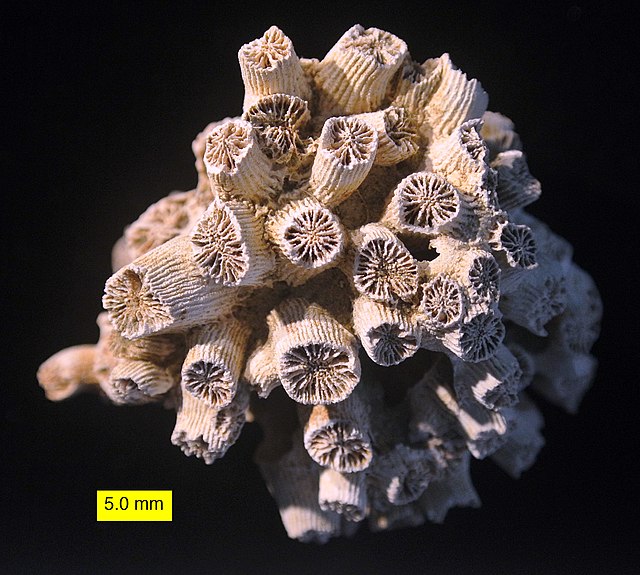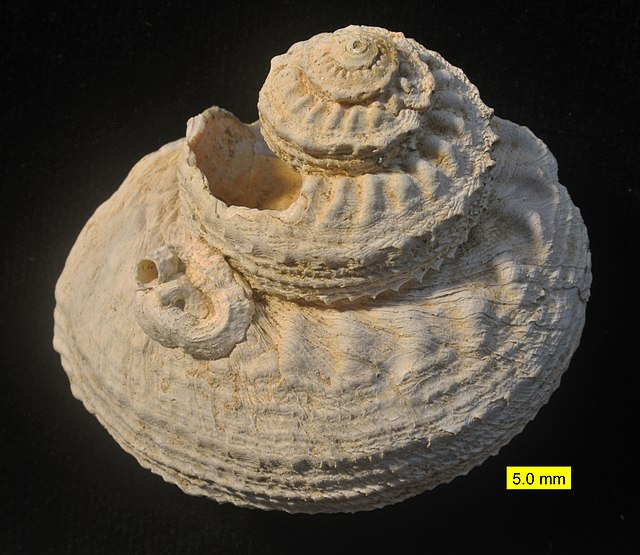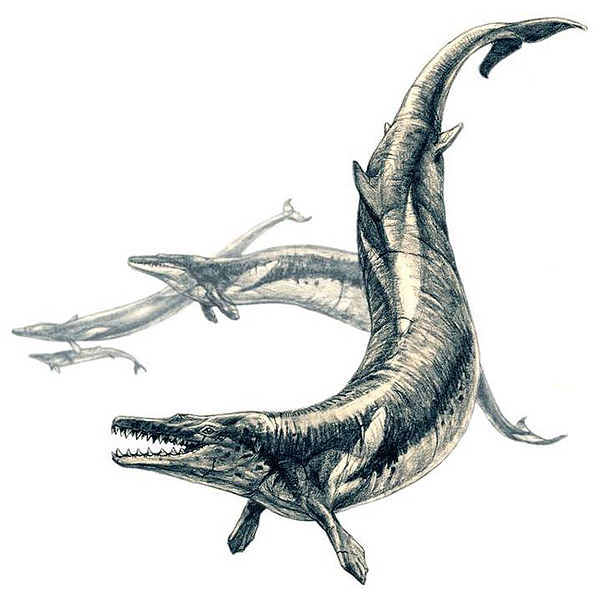The Pliocene is the epoch in the geologic time scale that extends from 5.333 million to 2.58 million years ago. It is the second and most recent epoch of the Neogene Period in the Cenozoic Era. The Pliocene follows the Miocene Epoch and is followed by the Pleistocene Epoch. Prior to the 2009 revision of the geologic time scale, which placed the four most recent major glaciations entirely within the Pleistocene, the Pliocene also included the Gelasian Stage, which lasted from 2.588 to 1.806 million years ago, and is now included in the Pleistocene.
Some schemes for subdivisions of the Pliocene
The gastropod Oliva sayana, from the Pliocene of Florida
The coral Cladocora from the Pliocene of Cyprus
A gastropod and attached serpulid wormtube from the Pliocene of Cyprus
The Cenozoic is Earth's current geological era, representing the last 66 million years of Earth's history. It is characterised by the dominance of mammals, birds, and angiosperms. It is the latest of three geological eras, preceded by the Mesozoic and Paleozoic. The Cenozoic started with the Cretaceous–Paleogene extinction event, when many species, including the non-avian dinosaurs, became extinct in an event attributed by most experts to the impact of a large asteroid or other celestial body, the Chicxulub impactor.
Rock deposits from the Cenozoic Era (Torre Sant'Andrea, Salento, Italy)
Basilosaurus
Megafauna of Pleistocene Europe (mammoths, cave lions, woolly rhino, reindeer, horses)







